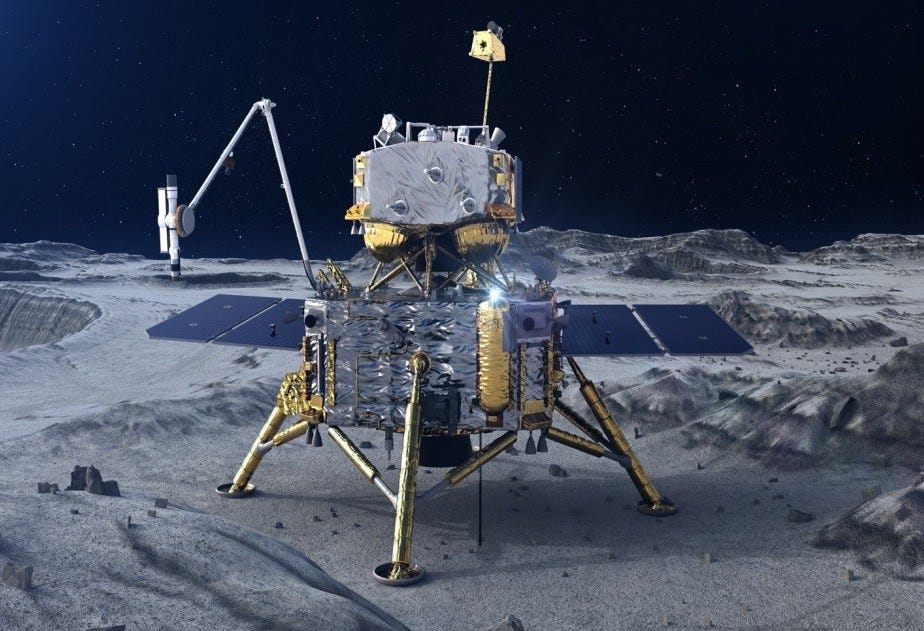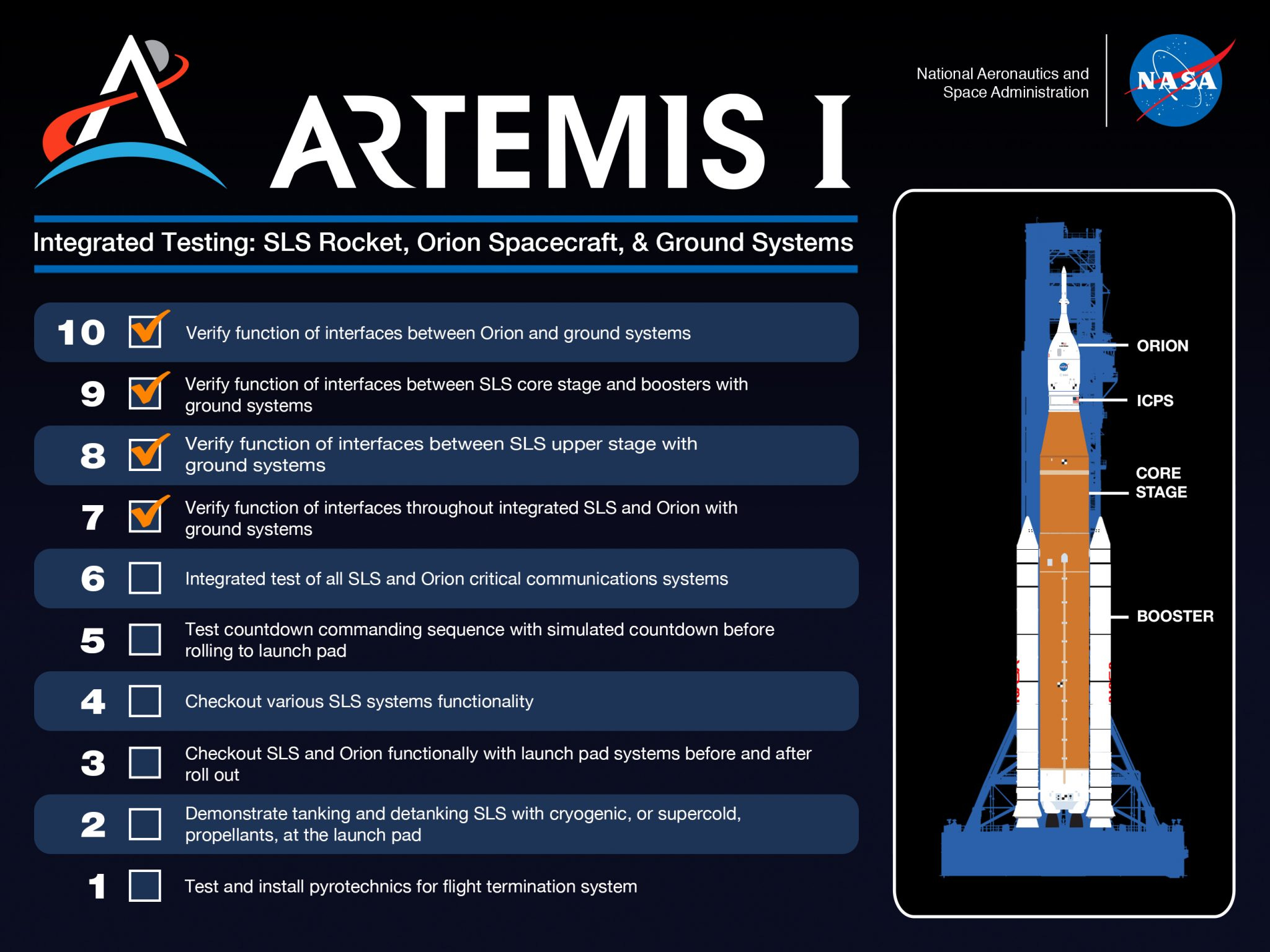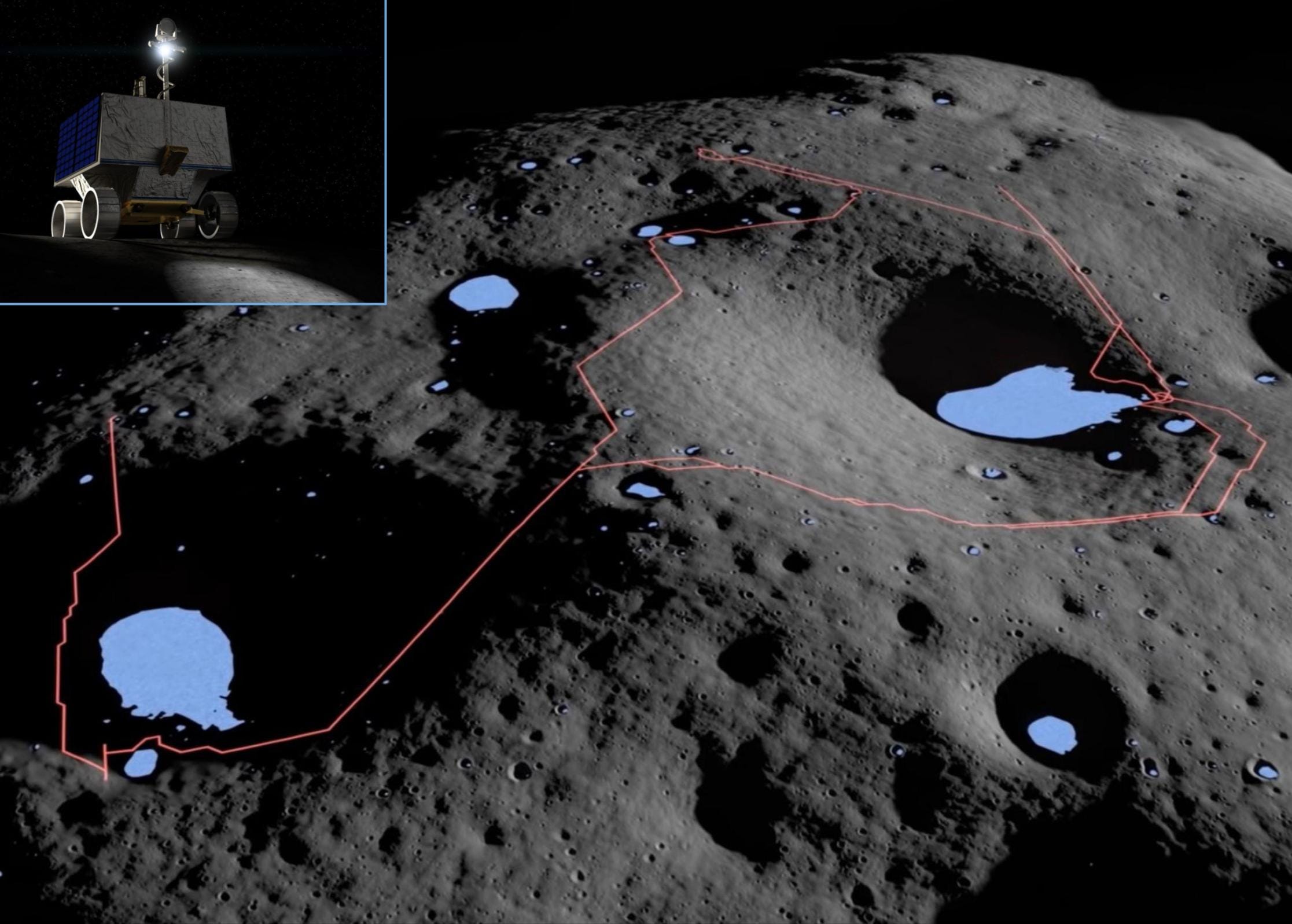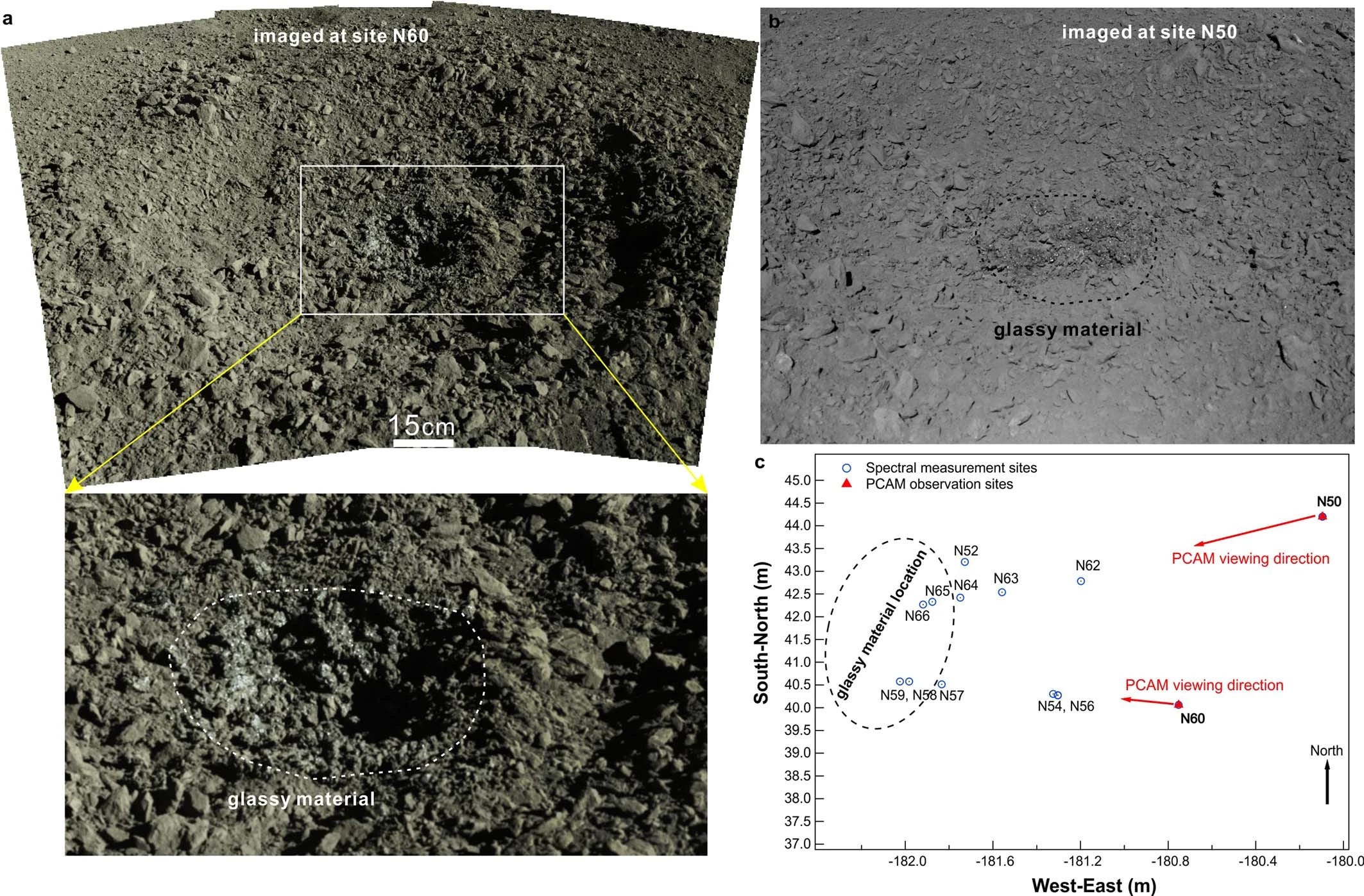Moon Monday Issue #58
China approves three more Moon missions; NASA adds eight scientists on key rover mission to study lunar water and other resources; the UN announces International Moon Day, and more lunar updates.
Welcome back to Moon Monday after the holiday break. It was nice writing another issue again after a bit; I had almost forgotten the excitement of all the momentum that is building up! And that is why I write Moon Monday—to see and show the progress of pieces that are driving our return to the Moon. Even though 2021 didn’t see many of its anticipated Moon missions launch, 2022 will almost certainly see a flurry of spacecraft reach for our cosmic neighbor. Here’s to going forward to the Moon. 🚀
Highlight
China has formally approved the fourth phase of their lunar exploration project, consisting of three missions: Chang’e 6, 7 and 8 respectively. Chang’e 7 will launch first, around 2024 on a Long March 5 rocket. It will consist of an orbiter and a lander, the latter of which will likely deploy a rover and a mini-flying probe to survey the environment and map resources in permanently shadowed regions on the Moon’s south pole. Chang’e 6 will launch soon after to return about two kilograms of samples from the Moon’s south pole, similar to how Chang’e 5 brought samples in 2020 from a lunar lava plain. The spacecraft will have a modified sampling system to survive the harsher conditions on the Moon’s south pole.

Chang’e 7 and some of the upcoming Russian Luna missions will help select a suitable site for the joint Chinese-Russian long-term scientific base on the Moon’s south pole, called the International Lunar Research Station (ILRS). Chang’e 8 will launch between 2026 and 2030 to deliver cargo at the selected site to begin setting up ILRS’ basic infrastructure, and test technologies to extract and use local resources for future mission needs, including for when humans eventually start visiting the base.
Related: Per Long Lehao, the chief designer of China’s successful Long March family of rockets, China could make a new crewed rocket, derived from its existing Long March 5, to land humans on the Moon before 2030 instead of waiting for the super heavy-lift Long March 9 to be operational by then. This new rocket can put 27,000 kilograms worth of payloads on a trajectory to the Moon, nearly thrice the capacity of the Long March 5. While Lehao’s words don’t officially represent Chinese space policy, he is an influential figure, and so this is a good indication that China is at least thinking about such an accelerated plan to land humans on the Moon.
Exploration
NASA’s first Artemis mission, to send an uncrewed Orion spacecraft around the Moon and back, has been delayed from next month to at least March 2022. The delay is caused by one of the two engine flight controllers on the SLS rocket’s fourth engine failing abruptly during testing. After performing a series of inspections and troubleshooting, engineers have decided to swap the controller and continue the fully stacked rocket’s integrated tests. Once both of these things are done, NASA will roll out the rocket to the launchpad to test fueling, defueling, and related procedures after which the agency will set Artemis I’s target launch date. The current soft target is during the period March 12-27. As is usual and commendable, NASASpaceflight has details on the delay and the affected road to launch.

Related: Last month, NASA and Aerojet Rocketdyne started a new testing round of an RS-25 developmental engine after a nearly year-long test run. Four older versions of RS-25 engines currently power the core stage of NASA’s SLS rocket, which will regularly carry humans to lunar orbit as part of the agency’s Artemis program. The new engine—to be used post 2025 on Artemis IV, V, and beyond—is built with advanced manufacturing techniques to reduce cost and build time, the former by over 30 percent. Given that the SLS rocket currently costs over $2 billion per flight, and each RS-25 engine a fiery $146 million, any price reduction is welcome.
Also related: Japan’s new prime minister has announced an end-of-the-decade goal to send Japanese astronauts to the Moon as part of Artemis. This intention is part of a revised national space policy roadmap (Japanese), awaiting cabinet approval, which also calls for cooperating with Japan’s private sector to develop crewed lunar rovers and other systems essential for human activities on the Moon.
Astrobotic’s first Moon landing mission as part of NASA’s CLPS program has been delayed to at least the second half of this year because its launch vehicle, ULA’s Vulcan rocket, won’t be ready in time. Eric Berger reports that Blue Origin isn’t going to deliver the two BE-4 flight engines for Vulcan to ULA until at least April 2022 due to unrevealed engine fabrication issues. Once these production kinks are ironed out, Blue Origin will test and reconfigure the two flight engines before sending them to ULA for final testing and flight integration.
Science
NASA has added eight scientists to the core science team of VIPER, the agency’s rover that will launch in 2023 to map water ice and other volatile resources in and around permanently shadowed regions on the Moon’s south pole. These new human talents will expand the mission’s scope by increasing the range of volatiles VIPER will look for, and how they interact with the Moon’s thin exosphere. For a mission as critical as VIPER from both a scientific and exploratory perspective, NASA is all set to maximize its returns.

Meanwhile, progress continues on better understanding sources of water on the Moon, all of which aids investigations by VIPER and future missions. China’s Yutu-2 rover from the Change’4 mission on the Moon’s farside has spotted rock fragments in a two-meter crater, the pieces being from the asteroid that created the crater itself. Scientists have identified the fragments to be from an carbonaceous chondrite, a water-rich class of asteroids. Since the crater is only a million years old—a small period on geological time scale—the authors say that asteroid impacts continue providing water to the Moon even now, in addition to the solar wind.

More Moon
The United Nations has declared July 20, the anniversary of the 1969 first human lunar landing with Apollo 11, as International Moon Day. Going forward, it will be an official annual event to educate people globally on Moon exploration, and evangelize for its future prospects and benefits to humanity. The hope is that it would also promote cooperation between lunar exploration stakeholders. The Moon Village Association will be the organization leading the International Moon Day activities.
Dear readers, I’m publishing this one-of-a-kind Moon exploration newsletter for free, with no ads. And it will stay that way. If you like my comprehensive global coverage of lunar exploration and science, support me to keep it going.
